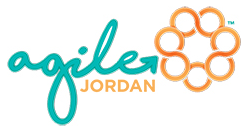In the realm of agile methodologies, the Scrum Master stands as a pivotal figure, serving as the guiding force behind effective project management and seamless collaboration. This significance holds true not only in the domain of software development but also across a spectrum of industries where agile practices have gained traction. For those well-acquainted with the principles of agility, it’s no secret that the role of a skilled Scrum Master is indispensable.
In this article, we embark on a journey to delve deeper into the multifaceted landscape of Scrum Masters and their influence, extending beyond the boundaries of software development. Our exploration will shed light on five distinctive profiles that, despite their familiarity with agile principles, can inadvertently become stumbling blocks for agile teams. By acknowledging and gaining insights into these challenges, our mission is to empower agile practitioners across diverse fields to not only recognize but also address these obstacles. In doing so, they can further refine their leadership capabilities and unleash the full potential of agile methodologies, irrespective of the industry they operate in.


Picture a Scrum Master who believes that “Scrum” is just a word and that the team should do exactly as they are told. This type of Scrum Master is often referred to as “The Dictator.” They fail to grasp the essence of self-organizing teams, a core principle of Scrum. Instead, they micromanage every aspect of the project, stifling creativity and innovation. True Scrum Masters empower their teams, fostering an environment where team members can make decisions collaboratively.

On the opposite end of the spectrum is “The Yes Man” Scrum Master. This individual simply complies with the team’s every request and rarely challenges them to learn and improve. While being accommodating is important, it’s equally vital for a Scrum Master to provide guidance and direction. A Scrum Master should be a mentor who helps the team grow and continuously improve their processes.

“The Scrum Police” Scrum Master approaches their role like a strict enforcer of Scrum practices, without considering the context or purpose behind these practices. While adhering to Scrum principles is important, it’s equally important to adapt and evolve as the project demands. A Scrum Master should be flexible, understanding that rigid enforcement can stifle creativity and hinder progress.

“The Philosopher” Scrum Master tends to get lost in the theoretical aspects of Scrum but struggles to translate these theories into practical value for the team. They may have a deep understanding of the Scrum framework on paper but falter when it comes to applying it effectively in real-world situations. A successful Scrum Master should bridge the gap between theory and practice, ensuring that the team benefits from agile principles.

Lastly, we have “The Tool Freak” Scrum Master, someone who becomes obsessed with project management tools like JIRA, Trello, or others. While these tools are valuable for facilitating work, they should complement the team’s workflow, not dictate it. The Tool Freak may spend excessive time configuring tools, losing sight of the team’s goals and priorities. A Scrum Master should use these tools as aids, not as the primary focus.

A skilled Scrum Master is a crucial asset to any Scrum team. Recognizing the traits of the worst Scrum Masters—The Dictator, The Yes Man, The Scrum Police, The Philosopher, and The Tool Freak—can help organizations identify and address ineffective leadership in their agile projects. In contrast, an effective Scrum Master is a servant-leader who empowers the team, fosters continuous improvement, and adapts to the dynamic needs of the project. By avoiding these common pitfalls, organizations can achieve the full potential of Scrum and reap the benefits of agile development.
